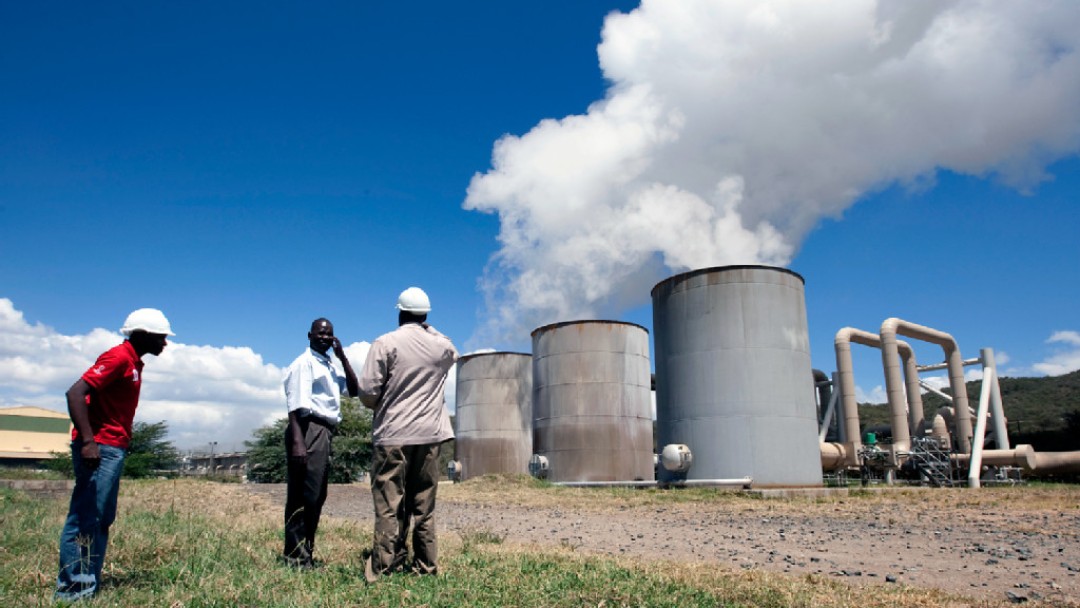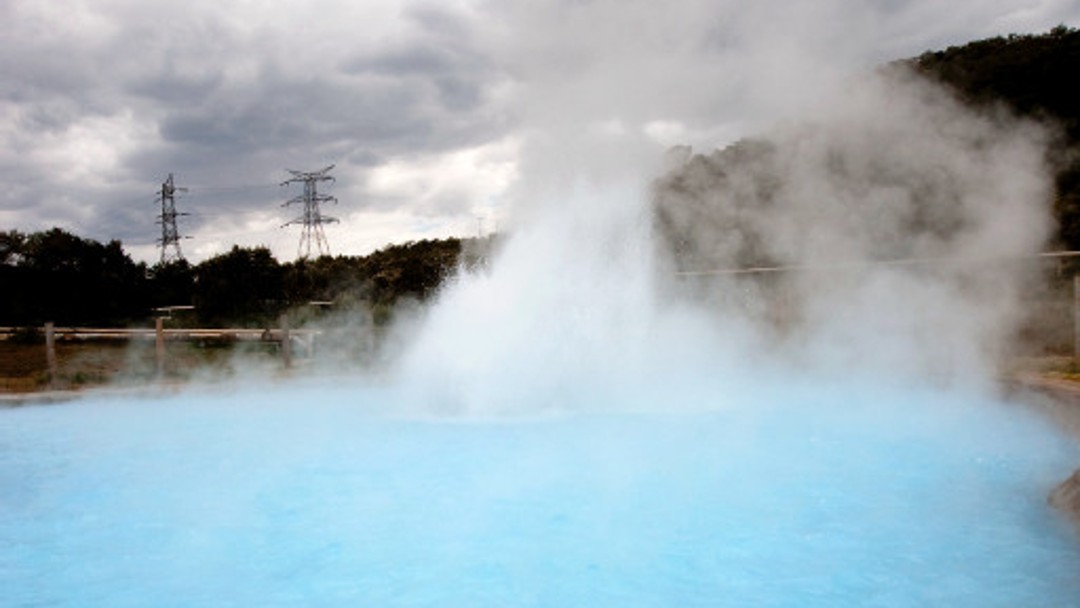News from 2023-05-08 / KfW Development Bank
Energy security through geothermal power plants in Kenya
KfW has been promoting the construction and expansion of the Olkaria power plant for many years

KfW Development Bank has been promoting the expansion of renewable energies in its partner countries for many years. In Kenya, the potential for using geothermal energy is particularly high, which is why it has been supporting the construction and expansion of what is now Africa's largest geothermal plant, in Olkaria, for more than 20 years. German Chancellor Olaf Scholz visited the power plants on the geothermal field, which is located about 90 kilometres northeast of Nairobi, during his stay in Kenya at the beginning of May.
The Chancellor, who was accompanied by Kenyan Minister of Energy Davies Chirchir and KfW Board Member Christiane Laibach, was impressed by the country's progress in expanding renewable energies. The share of non-fossil energy sources in electricity production in Kenya is currently already almost 90% - and geothermal energy will become increasingly important in the future. Its share is already around 46%.
"Kenya used to be heavily dependent on hydropower," explains KfW energy expert Michael Andres. But prolonged dry periods in the past also led to energy shortages, power outages and higher electricity prices. Against this backdrop, geothermal energy is to be further expanded – with a significant potential in Kenya: "It is distributed over numerous locations along the East African Rift Valley and is estimated at over 10,000 megawatts," Andres explains. And this is far more than the current total power generation capacity in Kenya, which was around 3,600 megawatts in 2022.
The use of geothermal energy offers even more advantages over the sun, wind and water: "Geothermal energy is not only a renewable and almost CO2-neutral technology. It is also largely independent of season and climate," Andres continues. In Olkaria, which is located in a volcanic region, steam comes out of the ground at around 300 degrees, which is then used to drive turbines to generate electricity.
In a concluding press statement, Chancellor Scholz emphasised that natural conditions and geological conditions also play a major role in the fact that the expansion of renewable energy in Kenya works so well. But nevertheless, the Kenyan way could be an example for Germany: "We want to operate in a climate-neutral way, a CO2-neutral way, very quickly. This will only work if we rely on renewable energies and produce electricity with wind power on the high seas, on land, with solar energy, but also by using the possibilities of geothermal energy."

KfW has been supporting the Kenyan energy sector for more than 20 years, primarily promoting the construction of geothermal power plants, including the cost-intensive and risky test drilling, with the involvement of the private sector. In the meantime, several geothermal projects in Olkaria (partly also in cooperation with other donors) and the rehabilitation of the Kindaruma hydropower plant have been realised. A total of around EUR 250 million has been provided, mostly in the form of loans.
A new geothermal project is currently being developed near Lake Baringo with an estimated potential of up to 3,000 MW. The first phase comprises the development of the area, including access roads, water supply and the first boreholes, and is being financed by KfW with a low-interest loan of EUR 80 million.

Share page
To share the content of this page with your network, click on one of the icons below.
Note on data protection: When you share content, your personal data is transferred to the selected network.
Data protection
Alternatively, you can also copy the short link: https://www.kfw-entwicklungsbank.de/s/enzBWrMC.C6DA
Copy link Link copied